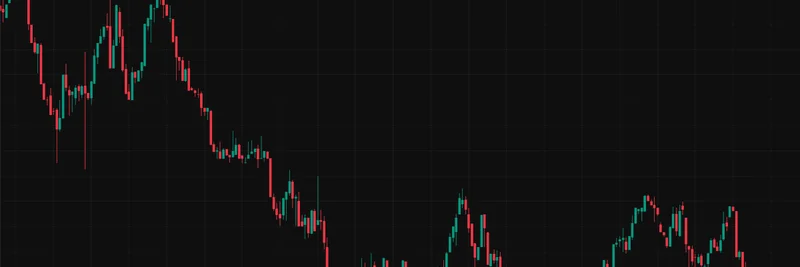Hey there, crypto enthusiasts! If you've been scrolling through X (formerly Twitter) lately, you might have stumbled upon a wild story that's got the blockchain community buzzing. A user named PixOnChain dropped a bombshell tweet that's racked up thousands of likes and reposts, highlighting what could be one of the most eye-opening moments in crypto security this year. Let's break it down step by step, keeping things simple and straightforward—because who doesn't love a good crypto drama?
The Tweet That Started It All
In the tweet, PixOnChain paints a vivid picture of Monero (XMR), the privacy-focused cryptocurrency often hailed as untouchable due to its strong emphasis on anonymity. Valued at around $6 billion, Monero has long been a thorn in the side of regulatory bodies and "three-letter agencies" (think FBI, CIA, etc.) because of its privacy features that make transactions hard to trace.
But then enters Qubic, a relatively newer player in the space. According to the tweet, Qubic started mining Monero, offering miners juicier rewards than the competition. Before anyone could blink, Qubic allegedly flooded the network with hashrate—the computational power used to secure and validate transactions—crossing the infamous 51% threshold. This gave them potential control over the network, allowing possibilities like rewriting transaction history, double-spending coins, or even censoring transactions. All for an estimated cost of just $100k per day!
The kicker? Monero's price dipped about 7% amid the chaos, Qubic paused their operations, and teased, "we chose not to take over… yet." PixOnChain wraps it up by questioning if external forces (those agencies again?) had a hand in it, and declares the end of the "too big to attack" era in crypto.
As you can see in the chart attached to the tweet, Monero's price took a noticeable hit, reflecting the market's knee-jerk reaction to the news.
What Really Happened: Qubic's "Stress Test"
Digging deeper, this wasn't some rogue hack but a deliberate demonstration by Qubic. Founded by Sergey Ivancheglo (also known as Come-from-Beyond, or CFB, a co-founder of IOTA), Qubic is a layer-1 blockchain project that's all about "Useful Proof of Work" (uPoW). Unlike traditional mining that just secures the network, uPoW aims to use that computing power for real-world tasks, like training AI models during idle times.
In this case, Qubic incentivized miners to switch over by burning their native $QUBIC tokens to boost rewards. They ramped up to over 51% of Monero's hashrate, performed a six-block reorganization (basically, undoing and redoing recent blocks to prove control), but stopped short of any malicious actions. It was framed as a proof-of-concept to showcase their tech's power and highlight vulnerabilities in proof-of-work (PoW) chains like Monero.
Sources like Cointelegraph and Qubic's own blog confirm this was a planned experiment. Qubic even live-streamed parts of it and is having it independently verified. The result? Qubic's price surged 25% initially, while Monero holders were left scratching their heads.
Explaining the Tech: 51% Attacks and Hashrate 101
If you're new to this, let's keep it simple. In PoW blockchains like Monero, miners compete to solve complex puzzles to add new blocks to the chain. The "hashrate" is the total computing power dedicated to this. If one entity controls more than 51% of it, they can potentially manipulate the network—hence the term "51% attack."
Monero uses RandomX, a CPU-friendly algorithm designed to resist specialized mining hardware and promote decentralization. But Qubic's approach showed that economic incentives can still concentrate power quickly. Miners flocked to Qubic because they earned more: about $3.13 per day versus Monero's $0.64, according to reports from Chaos Labs.
This event echoes past vulnerabilities in other chains, but Monero's privacy rep made it particularly shocking. It's not the first time—Ethereum Classic suffered real 51% attacks in the past—but Qubic's demo was more of a wake-up call than a heist.
Community Reactions and the Bigger Picture
The X community exploded with reactions. Some Monero defenders, like @tuxpizza, called it propaganda and insisted it never truly hit 51%. Others from the Qubic side, such as @Qubicintern, downplayed it as a "side piece" to their main goal: building Artificial General Intelligence (AGI) through decentralized computing.
Posts from @cryptodotnews highlighted Qubic leading an altcoin rally post-event, while miners like @RedPandaMining expressed frustration at being caught in the crossfire. Even Zcash enthusiasts chimed in, noting similar vulnerabilities in their network.
This saga raises big questions: Is any PoW chain truly safe from economic takeovers? Could this push more projects toward proof-of-stake or hybrid models? And what about meme tokens—could similar tactics disrupt viral, low-hashrate memes that pop up overnight?
At Meme Insider, we're all about decoding these events to help you navigate the wild world of blockchain. While Monero isn't a classic meme token, the viral nature of this "attack" has meme-worthy drama written all over it. Qubic's $QUBIC token, with its AI twist, might even inspire the next wave of meme-inspired AI cryptos.
What's Next for Monero and Qubic?
Monero's team is likely brainstorming defenses, perhaps tweaking incentives or algorithms. Qubic, meanwhile, plans to move on to bigger things, like selling compute power to AI firms. As PixOnChain hinted, game theory is at play here—miners go where the money is, and that could reshape the entire mining landscape.
If you're holding XMR or eyeing $QUBIC, keep an eye on updates from official channels. Events like this remind us that crypto is as much about tech as it is about economics and human behavior.
What do you think—brilliant demo or reckless stunt? Drop your thoughts in the comments below, and stay tuned to Meme Insider for more breakdowns on the latest crypto buzz! 🚀



